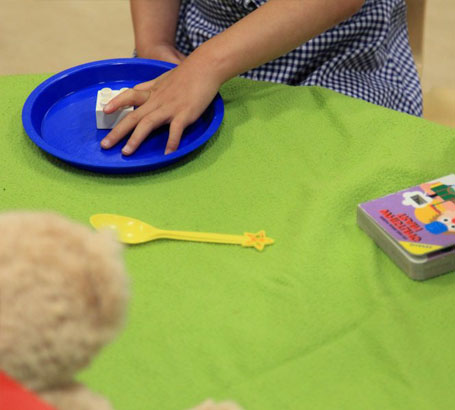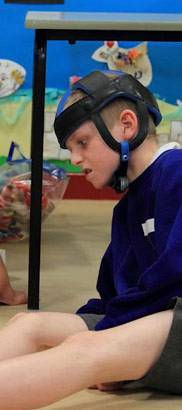
Here you are encouraged to assess a child's object permanence. This is an opportunity to become more familiar with this
milestone and to reflect upon the value of this means of assessment.
It is also an opportunity to consider the need for staff to become confident and consistent in this type of assessment.
Kiernan discusses three related types of behaviour and how it is possible to test for the pupil’s stage of development by using just a few objects that the pupil likes together with some easily moved items to use as screens.
Read the following for more information.

Consider a child in your context and the extent to which you currently feel confident in assessing this area. Undertake
your own assessment of object permanence.
Set up test situations to determine where your pupils are in relation to the steps presented by Chris Kiernan.
- Reflect upon how these tasks were useful or otherwise.
- How confident did you feel about designing and doing these assessments?
- Do you feel that you gained a good understanding of the pupil's abilities? If so, how? If not, why not?
- How could you ensure that inexperienced staff could complete such assessments confidently and using a consistent approach? How much room is there here for human error through subjectivity?
It is essential for objectivity and consistency that the assessment should be criterion-referenced. For example:
Obtains partially hidden object - When an object is partially hidden beneath a screen within easy grasping distance
of the pupil, the pupil obtains the object.
Presentation -The object is put in front of the pupil and the pupil's attention drawn to it. A cover of some kind (eg
a cloth or a cardboard box) is then put over the object so that it partially covers it. There should be no delay imposed
between the completion of the presentation procedure and allowing the pupil to respond.
Note that you may wish to do several retests before you are confident that the child can do this.